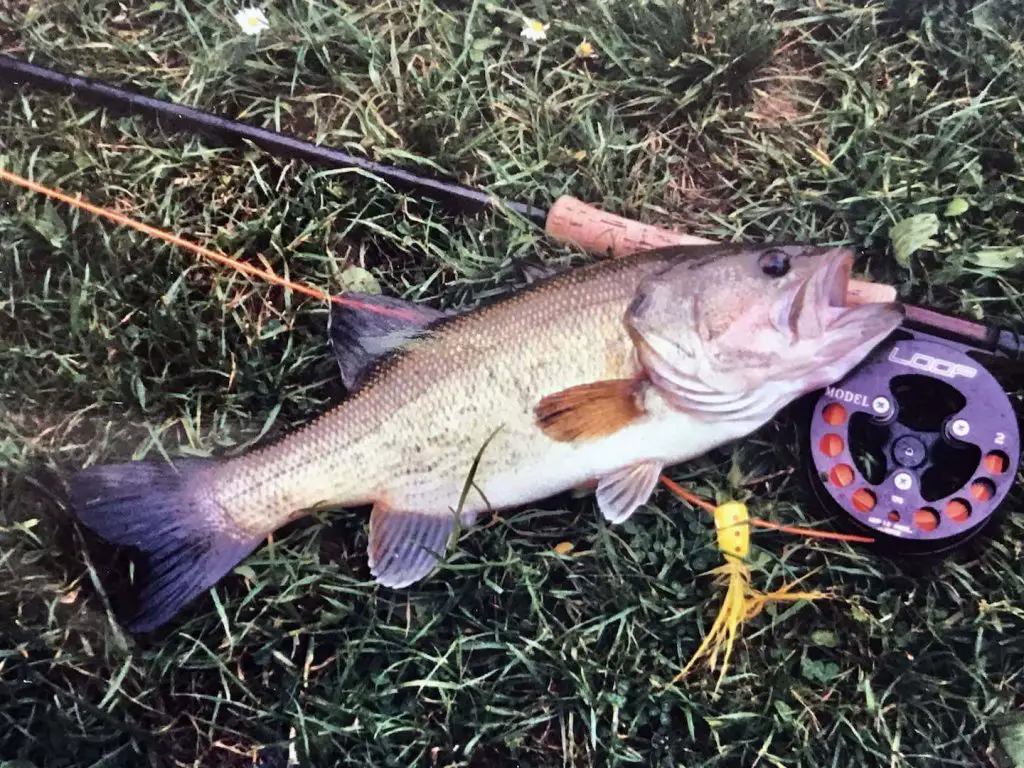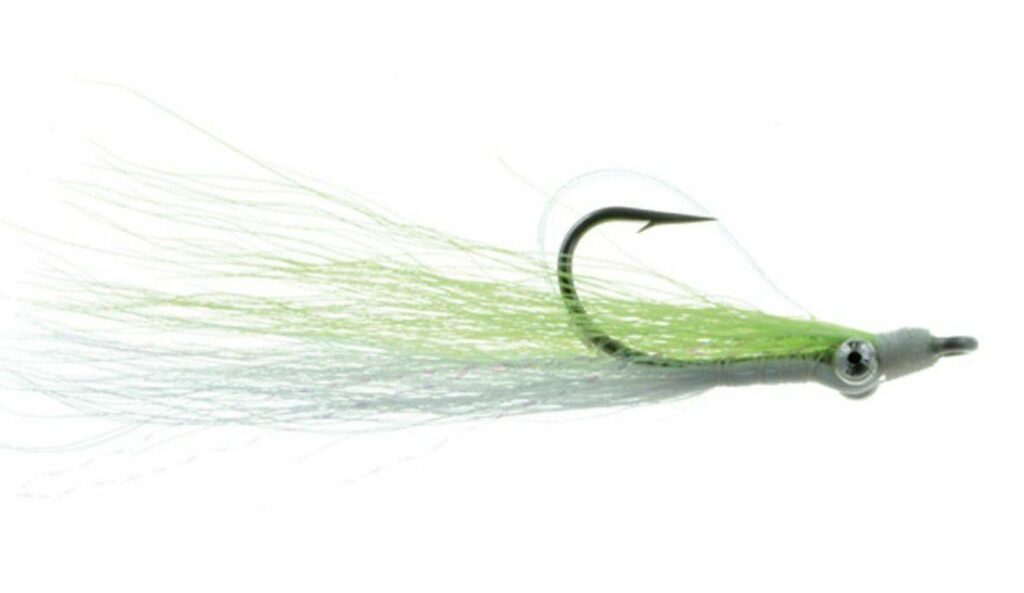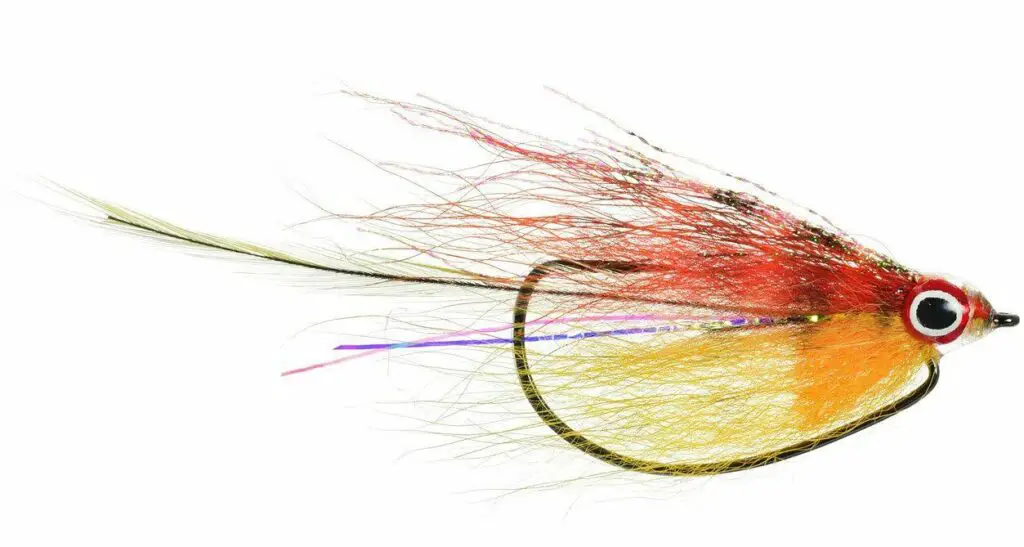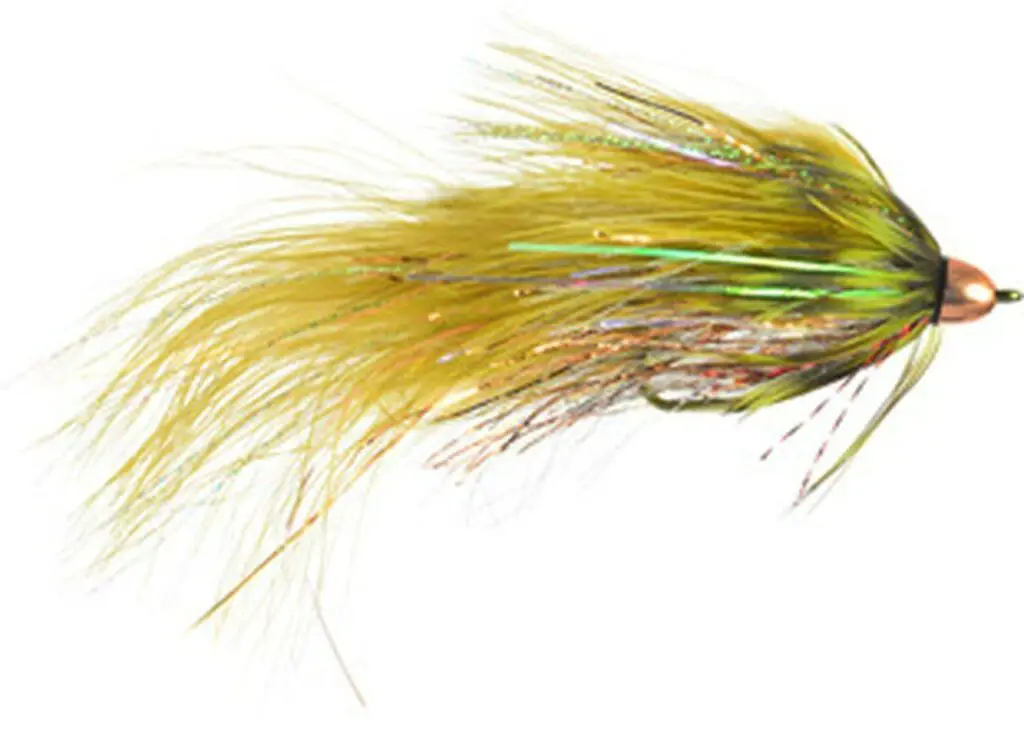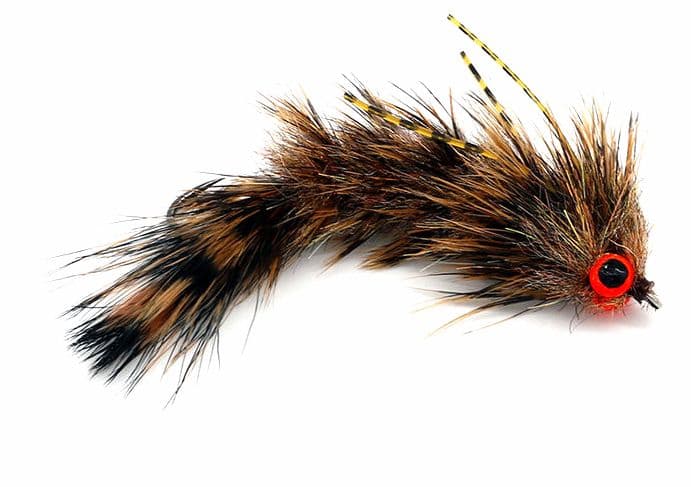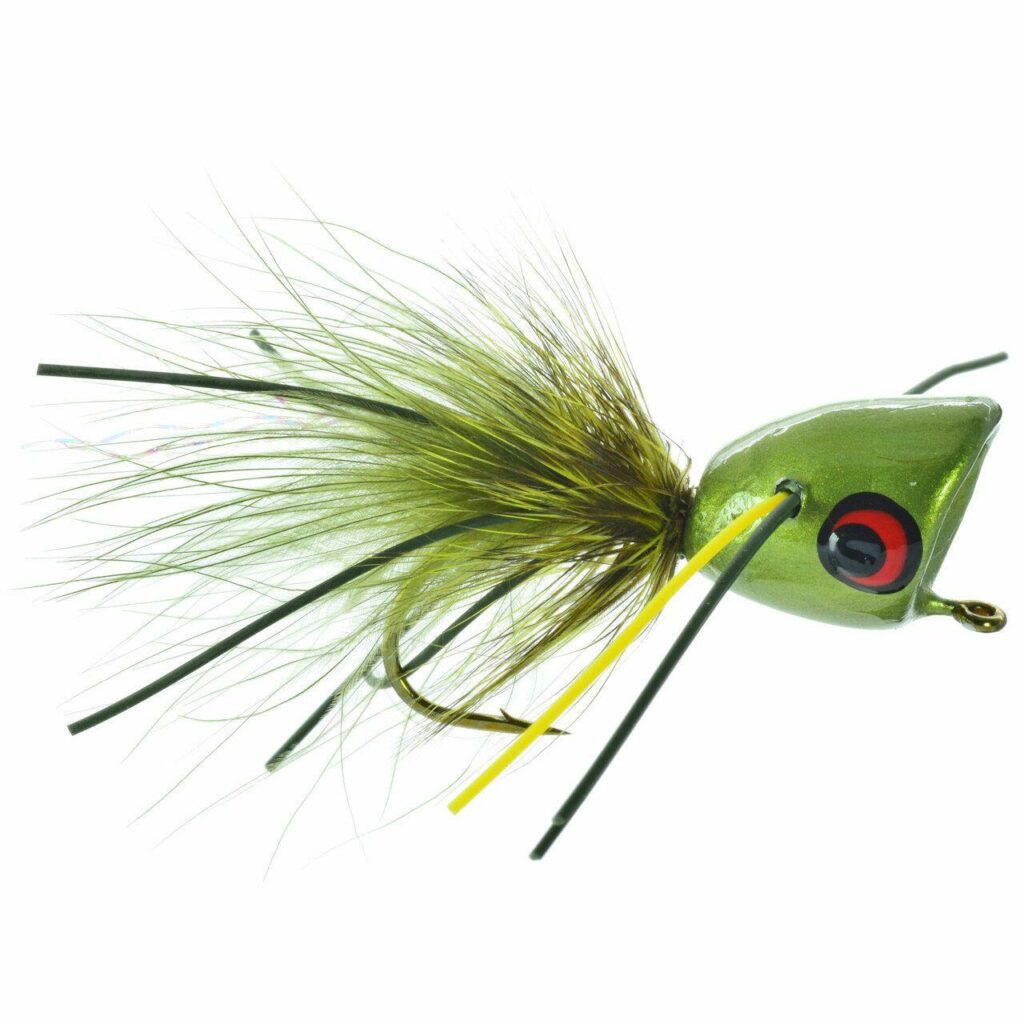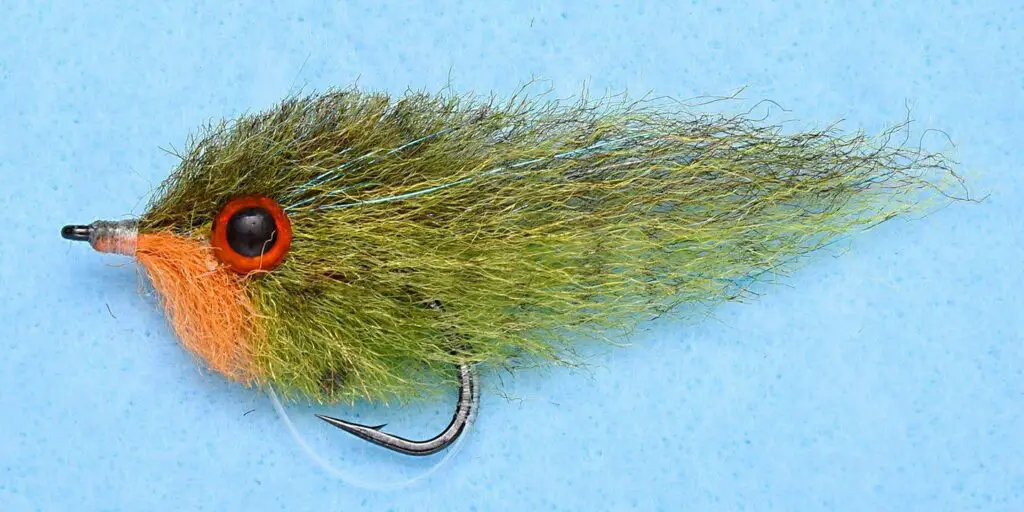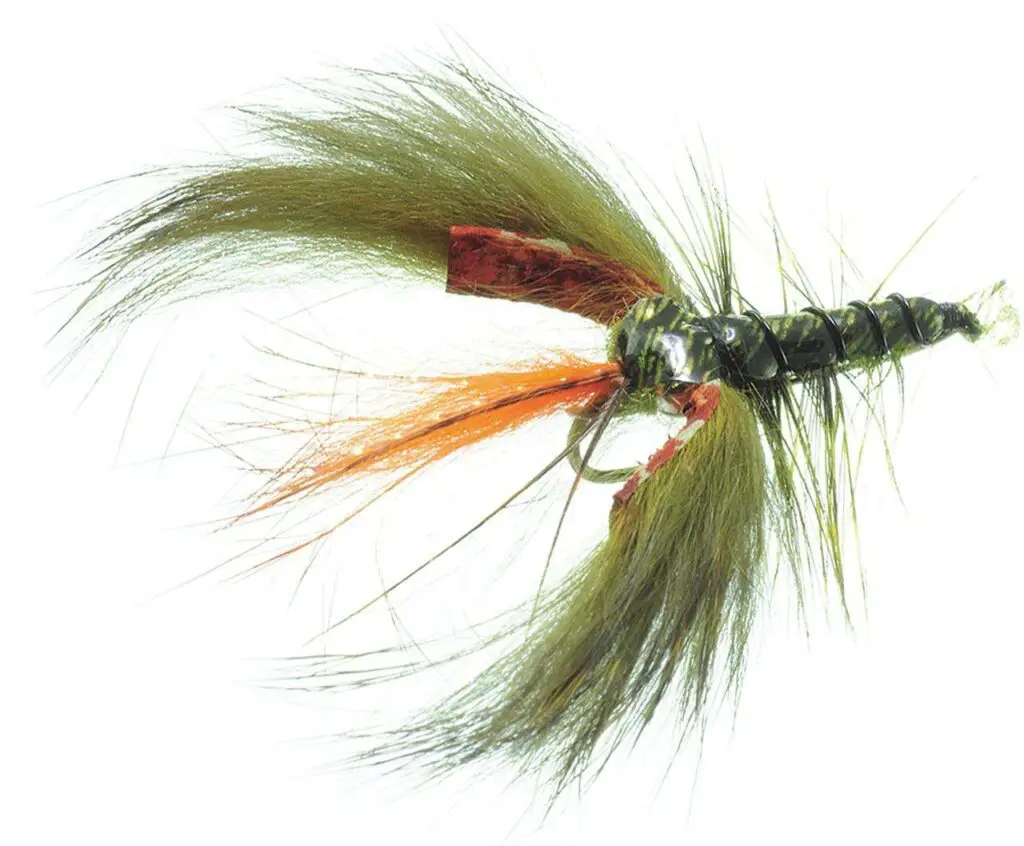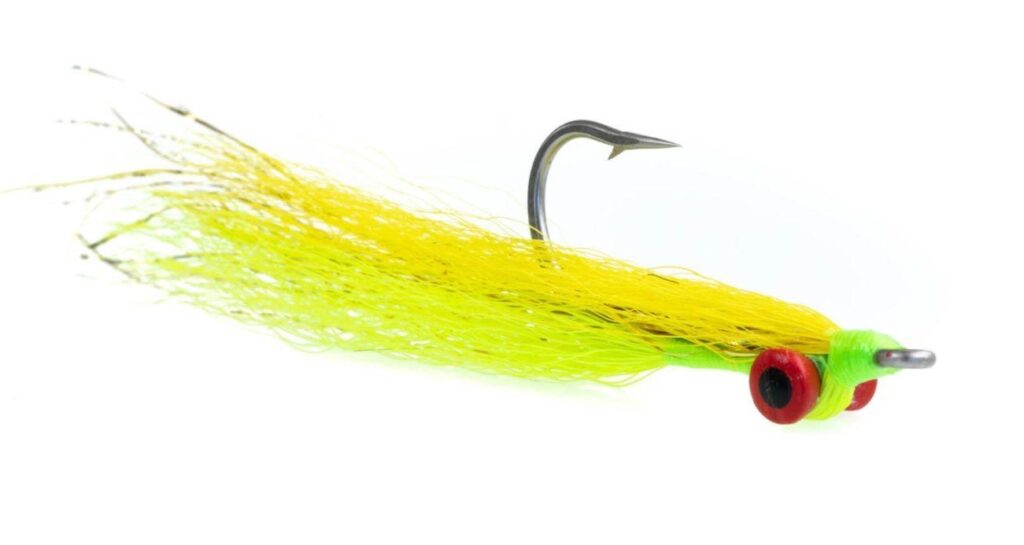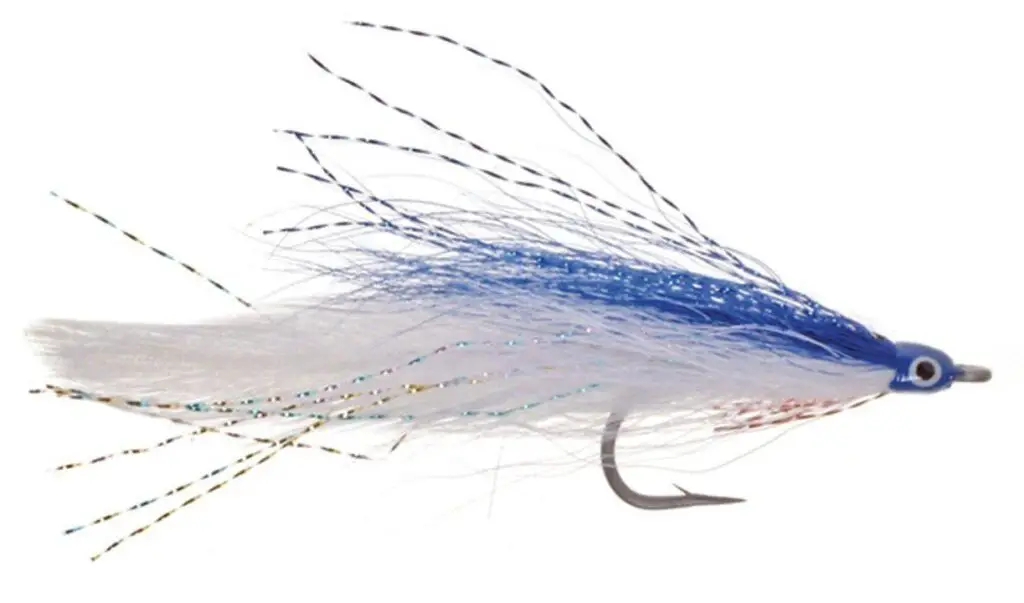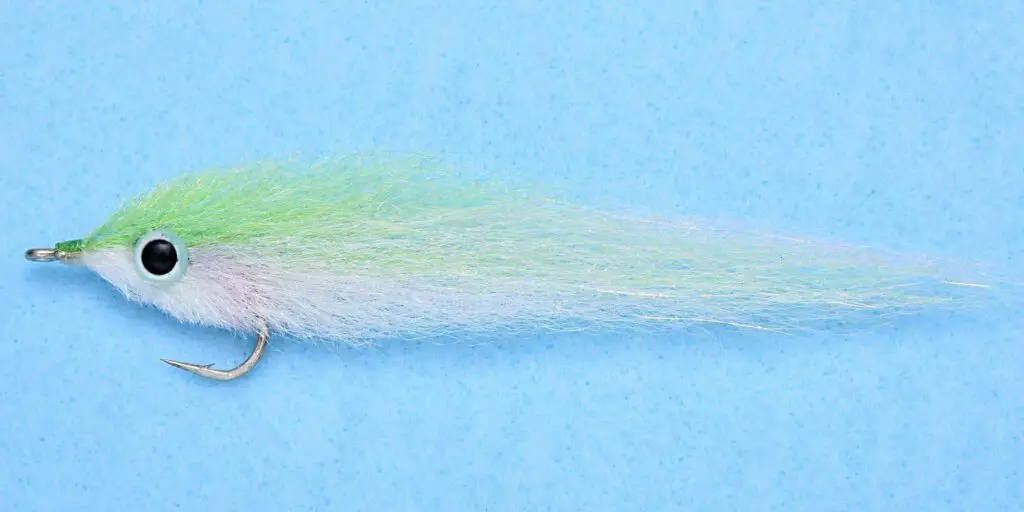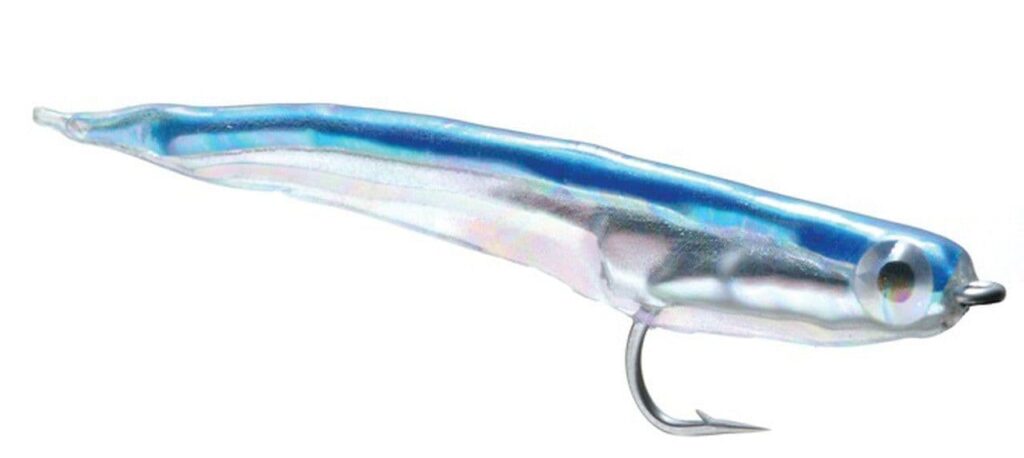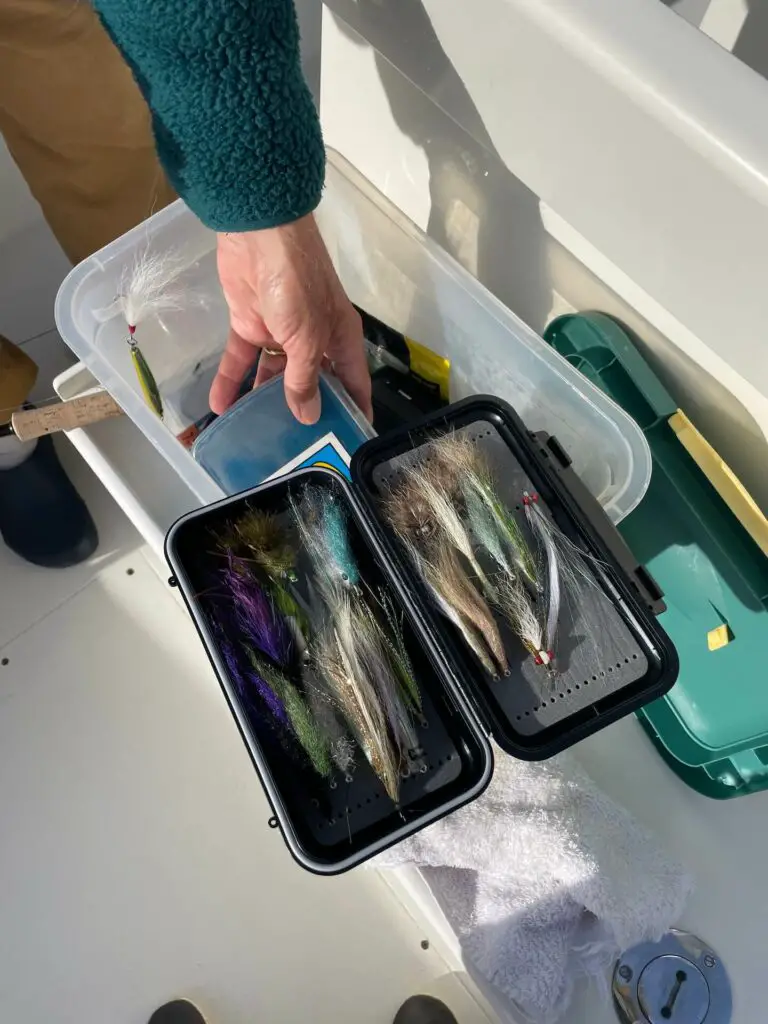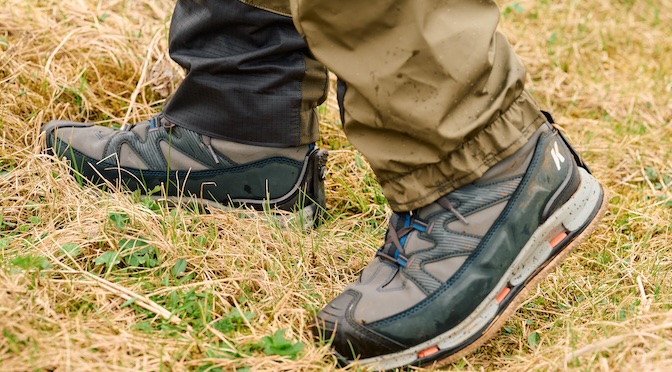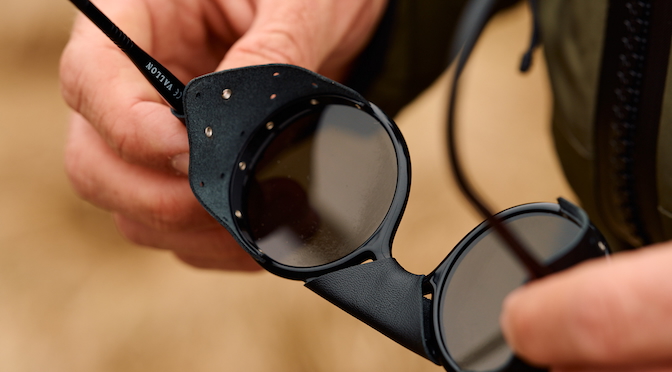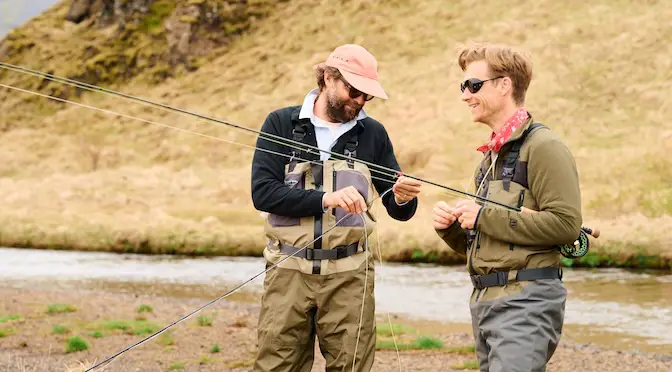Last updated on June 1st, 2023.
- Wading Wisdom #13 – Simon Gawesworth - July 7, 2025
- On the Water with the Korkers Bantam Lite - June 26, 2025
- How to Find Trout in Rivers & Streams Anywhere - June 13, 2025
Bass is one of the most exciting species to pursue on a fly rod.
Are you an avid fly fisherman looking to add some of the best bass flies to your tackle box? Whether you’re after stripers, largemouth or smallmouth bass, there’s a variety of patterns that can be used for each species. From surface patterns and streamer patterns to baitfish patterns, this article will provide all the information needed when selecting your next set of go-to flies for targeting these sough-after fish.
Table of Contents:
Quick Answer List Best Flies for Bass Fishing
Best Bass Flies of all Time Reviewed
Different Types of Flies for Bass
Note: We may earn a small commission from products recommended on this page and participate in affiliate programs. Learn more here.
12 Best Flies for Bass of all Time Quick Answer List
All Time Best Flies for Bass – Proven to Catch Fish
Without further ado, let’s jump right into our review of the best flies for bass of all time. Since not all of you will want to catch the same kind of bass, we’ve broken this overview down into the three most popular sub species of bass: smallmouth bass, largemouth bass and striped bass. Let’s go.
Best Smallmouth Bass Flies
To start off our big review, we’ll take a look at our top 4 flies for smallmouth bass that are guaranteed to catch you fish.
Disclaimer: All products in this guide are independently researched by our team. We only recommend products we believe in and never get paid for the reviews. Learn more about our review process here.
Skinny Water Minnow
The Skinny Water Minnow is designed by Bob Clouser and is ideal for making delicate presentations in shallow water to predatory fish. It takes inspiration from the Clouser Deep Minnow but is lighter to avoid spooking fish. If you had me pick one favorite from all my smallmouth bass flies, I think I’d go for this one. The fly has bead chain eyes, a bucktail and flash body, making it suitable for catching anything from smallmouths, largemouths to stripers. It can be fished on a floating, intermediate, or full sink line and should be stripped for maximum movement. The most popular colors are chartreuse over white and pink over white, and it is commonly found in sizes 2-6.
Huds Bushwacker
Huds Bushwacker is the newest kid on the block when it comes to bass flies, but it’s already making a big splash! This little guy is tied on a hook that’s as weedless as a vegetable-averse rabbit, and will glide through weeds, grass, and wood like it’s a hot knife through butter. With a nice rate of fall, the Bushwacker will flutter down like a shad or bluegill on its last legs, making it the perfect lure for those big bass lurking in the weeds. Trust me, you’ll be shocked at how clean this bug stays and how much better your fishing game will be!
Lil Kim Fly
The Lil Kim Fly is a versatile streamer that catches a variety of predatory fish, including big smallmouth bass and largemouth bass. With a body of marabou, flashes, a soft hackle collar, and a conehead, it has a natural flow in the water and plenty of movement that fish love. The LiL Kim Fly effectively imitates generic baitfish and is productive for pursuing bass, particularly during early spring and early fall.
Chockletts Bugger Game Changer
The Chockletts Bugger Game Changer is a next-generation micro fly, designed by Blane Chocklett using the Fish-Skull Articulated Micro-Spine system. It takes the classic Woolly Bugger streamer fly to the next level by adding multiple micro-spine articulations for lifelike movement, making it a versatile fly that can attract fish in various water conditions, such as rivers, ponds, and lakes. The Bugger Changer imitates various natural foods that bass love, such as crayfish, minnows, sculpin, and leeches, and its ultra-lifelike movement results in more fish in the angler’s net. This is one of the more unusual smallmouth flies, but trust me, give it a try and you won’t be disappointed.
Best Largemouth Bass Flies
Largemouth bass are a popular gamefish in many parts of the world, and they can be caught with a variety of fly patterns. Poppers and sliders are two great options for targeting largemouth bass.
Bass Popper Fly
“Feeling the need for some fishin’ fun? Grab your Bass Popper and head on down to the pond or river! Trust us, these classic lures are always a sure bet for luring in those lunkers. With so many variations out there, we prefer the ones that keep it simple at make a nice “bloop” sound when bouncing on the surface. On a steamy summer evening, give your line a little wiggle and watch the largemouths flock to the sound. And if you want to send those bronze beasts into a frenzy, just strip it fast and watch the water explode.
Micro Slider
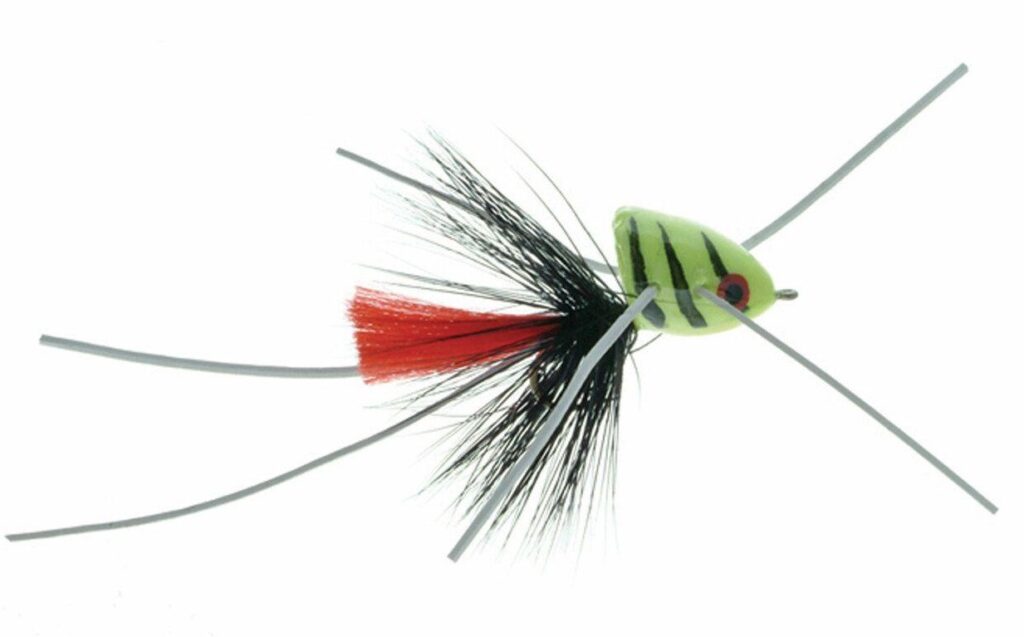
The Micro Slider is the MVP of top-water flies for Largemouth Bass and Chartreuse is the MVP color. Sure, you can experiment with other colors and sizes, but why bother? Chartreuse works like a charm no matter the weather, from scorching hot days to overcast days. Stock up in sizes 4, 6, and 10, but remember, size 6 is the MVP. Trust me, the tail can be any color you want, but the key to success are the right proportions.
EP Pumpkinseed
The EP Pumpkinseed is a highly effective freshwater fly that imitates bluegill, a preferred food source of apex predators. Tied in the classic Enrico Puglisi style, the fly features accurate colors and a realistic profile, along with an integrated weed guard to prevent hangups – a detail you shouldn’t underestimate from my experience. This pattern can be fished in a variety of locations and with different line types, making it a versatile and effective choice for catching opportunistic fish from small farm ponds to large rivers and reservoirs, especially where bluegill and other small panfish may be present.
Dead Drift Crayfish
The Dead Drift Crayfish is a versatile fly for freshwater fishing, attracting a range of species including large bass, no matter if largemouth or smallmouth. Created by Tim Haddon, the fly features realistic design elements like zonker strip claws and a hackled body covered with a lifelike shellback, making it ideal for dead drifting or crawling along the bottom. This pattern is best used in the warmer months of the year, when crayfish are a protein-rich meal, and works equally well in still or flowing water.
Best Striped Bass Flies
Striped bass are a popular game fish in many parts of the United States, and they can be caught with a variety of flies. The best flies for striped bass will depend on the conditions you’re fishing in and what type of baitfish is available. Here are our top 4 for stripers.
Clouser Minnow
The Clouser Minnow is a legendary streamer that’s been catching bass since Bob Clouser created it in the 80s. It features a bucktail construction with added flash and lead dumbbell eyes that create an enticing jigging action. I love the fly for its versatility, hence it great for stripers in saltwater environments but will definitely trick a large or smallmouth as well. Lefty Kreh, legend of the game, considers the Clouser Minnow one of the most important and effective flies on the market – I have to agree! The fly comes in various sizes and colors to match the bait in the area, and is a reliable streamer that you can’t go wrong with.
Deceiver Fly
The Deceiver is a world-famous streamer fly created by Lefty Kreh in the 1950s to catch striped bass in the Chesapeake Bay. I dig its slim design that includes a fish shape, versatility in length, and reduces fouling when casting. The Deceiver is suitable for saltwater and freshwater fishing, catching a variety of species including bass, but also large trout for example. It comes in a range of colors and sizes to match the forage fish, with staple colors being all white, all black, and chartreuse over white in sizes 1/0-3/0. It is a must-have for anglers starting in saltwater fishing or looking to add tradition to their freshwater bass box.
EP Anchovy Fly
The EP Anchovy Fly is a versatile baitfish pattern created by Enrico Puglisi for a range of environments and conditions. It is designed to match anchovies and other slim-profile baitfish and is made with EP fibers, flash, and realistic eyes, with a subtle gill marking and a head that pushes water. The fly is ideal for freshwater and saltwater scenarios and is best presented with a stripped retrieve. When the Deceiver or Clouser don’t work for the stripers, go for the EP Anchovy Fly and you’ll understand why I think it’s one of the best striped bass flies.
Gummy Minnow Fly
The Gummy Minnow Fly is a simple fly pattern that mimics small baitfish, available in various colors. It is suitable for saltwater fishing for Stripers and Albies, as well as freshwater fishing for Smallmouth and Largemouth Bass. It has a resin-built soft plastic body with lifelike eyes and a saltwater hook, and is stripped on the surface without added weight. The gummy body enhances the fly’s durability and reduces fouling. In my yes, this is one of the most underestimated striped bass flies.
Surface Patterns
Surface patterns are a great way to catch bass, as they imitate the prey items that bass feed on. Poppers are designed to make a loud popping sound when retrieved across the surface of the water, which attracts bass. These poppers come in various sizes and colors and can be used for different types of fishing conditions. Sliders glide across the surface with a subtle wake, imitating small baitfish or frogs. They are usually made from foam or deer hair and come in many shapes and sizes. Crease flies create a V-shaped wake when retrieved across the surface of the water, mimicking small baitfish or frogs. They are typically tied with hackle feathers or marabou for added movement in the water. All three types of surface patterns can be effective when targeting bass, depending on your desired presentation and fishing conditions.
Streamer Patterns
Streamer patterns are a great way to target all kinds of bass. Clousers are designed to be retrieved quickly with a jerky motion, mimicking an injured baitfish. They feature bright colors and flashy materials that attract bass from further away. Woolly buggers imitate healthy baitfish by being retrieved slowly with a swimming motion. These flies typically have more natural colors and textures than clousers, making them ideal for when the fish aren’t as active or aggressive. Muddlers are also retrieved slowly but create a disturbance in the water as they move through it, which can draw attention from nearby bass. All three of these streamer patterns can be effective depending on what type of prey the bass is feeding on at any given time.
When fishing with streamer patterns, it is important to pay attention to the speed of your fly line retrieval and how deep below the surface you keep your pattern. If no bites are received after several casts, try changing up the retrieve speed or depth until something that works for that particular situation is found. Additionally, don’t forget about experimenting with different color combinations or adding flash material to make your pattern stand out even more. With some trial and error, you will soon discover which streamer pattern works best for each situation so that you can start catching more fish.
Baitfish Patterns
Baitfish patterns are an essential part of any fly fisherman’s arsenal. These flies imitate small baitfish or other prey items that bass feed on, and can be used to great effect when targeting larger fish. Deceivers are designed to be retrieved quickly through the water column with a jerky motion, mimicking an injured baitfish or insect larvae. They often feature bright colors and flashy materials such as tinsel or flashabou for added attraction. Lefty’s deceivers are similar in design but have more realistic details such as eyes and gills for added realism when imitating small baitfish or insect larvae.
Zonkers are designed to be retrieved slowly through the water column with a swimming motion while also creating a disturbance in the water as they move through it which can help attract bass from further away distances than other fly patterns can reach them at times. Zonkers typically feature rabbit fur strips tied onto the hook shank which provide movement and vibration in the water that mimic fleeing prey items like minnows or crayfish making them irresistible to bass looking for an easy meal.
Conclusion on the Best Bass Flies
Whether you’re targeting striped bass, largemouth bass or smallmouth bass, the right type of fly can make all the difference in your success rate. Surface patterns, streamer patterns and baitfish patterns are all great options for catching these fish. With a little bit of research and practice, you can find the best flies for each species to help increase your chances of landing that big catch.
Why You Should Trust Our Reviews
Leonard Schoenberger and his team spend plenty of days out fishing. Their goal is to test and review products for you so you can make a solid purchase decision and improve your fly fishing game. We always express our honest opinions, never get paid for reviews and are proud of our editorial independence.
FAQs
What flies do bass like?
Bass are known to be aggressive predators, so they tend to respond well to a variety of flies. Streamers such as Wooly Buggers and Clouser Minnows are popular choices for bass fishing, as they imitate small baitfish that bass feed on. Poppers can also be effective in the right conditions, particularly when there is surface activity or during the summer months. Nymphs like Pheasant Tails and Hare’s Ears work well too since they resemble aquatic insects which bass also feed on. Experiment with different patterns until you find what works best for your local waters.
What dry flies do bass like?
Bass are opportunistic feeders and will take a variety of dry flies. Commonly used patterns include foam beetles, ants, grasshoppers, cicadas, and hoppers. For subsurface fishing, try soft hackles such as the Partridge & Orange or Pheasant Tail Nymphs. Streamers like Wooly Buggers can also be effective for bass in deeper water. When choosing a fly pattern to use for bass it is important to consider the size of the fish you are targeting and match your fly accordingly. Experiment with different colors and sizes until you find what works best in your area.
What size flies for largemouth bass?
When fly fishing for largemouth bass, the size of flies used will depend on a few factors. Generally speaking, small to medium-sized streamers and nymphs are best for targeting largemouth bass. Streamer sizes should range from 2-6 inches in length with weights ranging from 1/64th to 1/8th ounce. Nymphs should be smaller than streamers and range in size from #10 – #16 hooks. When selecting a fly pattern, consider the water clarity and time of year as these can affect which type of pattern is most effective. Ultimately, it’s important to experiment with different patterns and sizes until you find what works best for your particular situation.
How do you fish the best bass flies?
Fly fishing for bass is a popular and rewarding activity. To start, you’ll need the right gear: a fly rod, reel, line, leader, tippet and flies designed specifically for bass. Once you have your equipment ready to go, it’s time to find the fish. Look for areas with structure such as weeds or rocks where bass like to hide. Cast your fly out in front of these structures and let it sink down before beginning a slow retrieve back towards you. Pay attention to how the water moves around any obstacles that may be present; this can help determine which direction the fish will strike from. Keep an eye on your line while retrieving so that when there’s a bite you can set the hook quickly. With patience and practice you’ll soon be catching some big ones.

